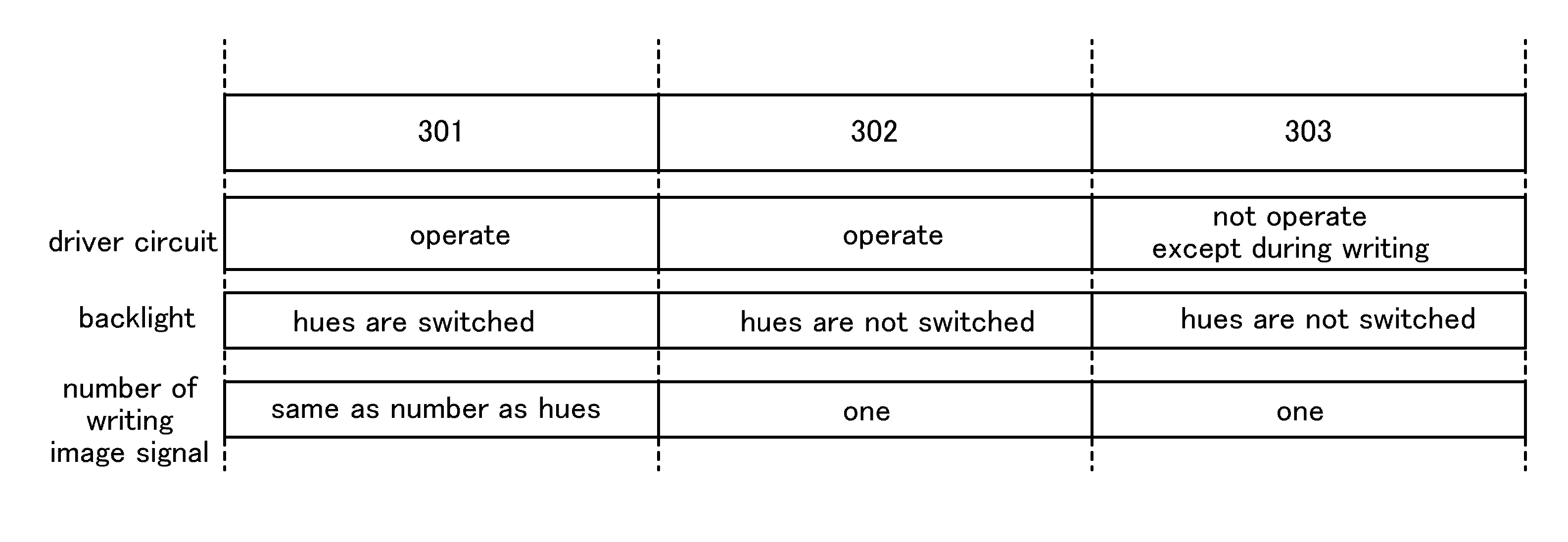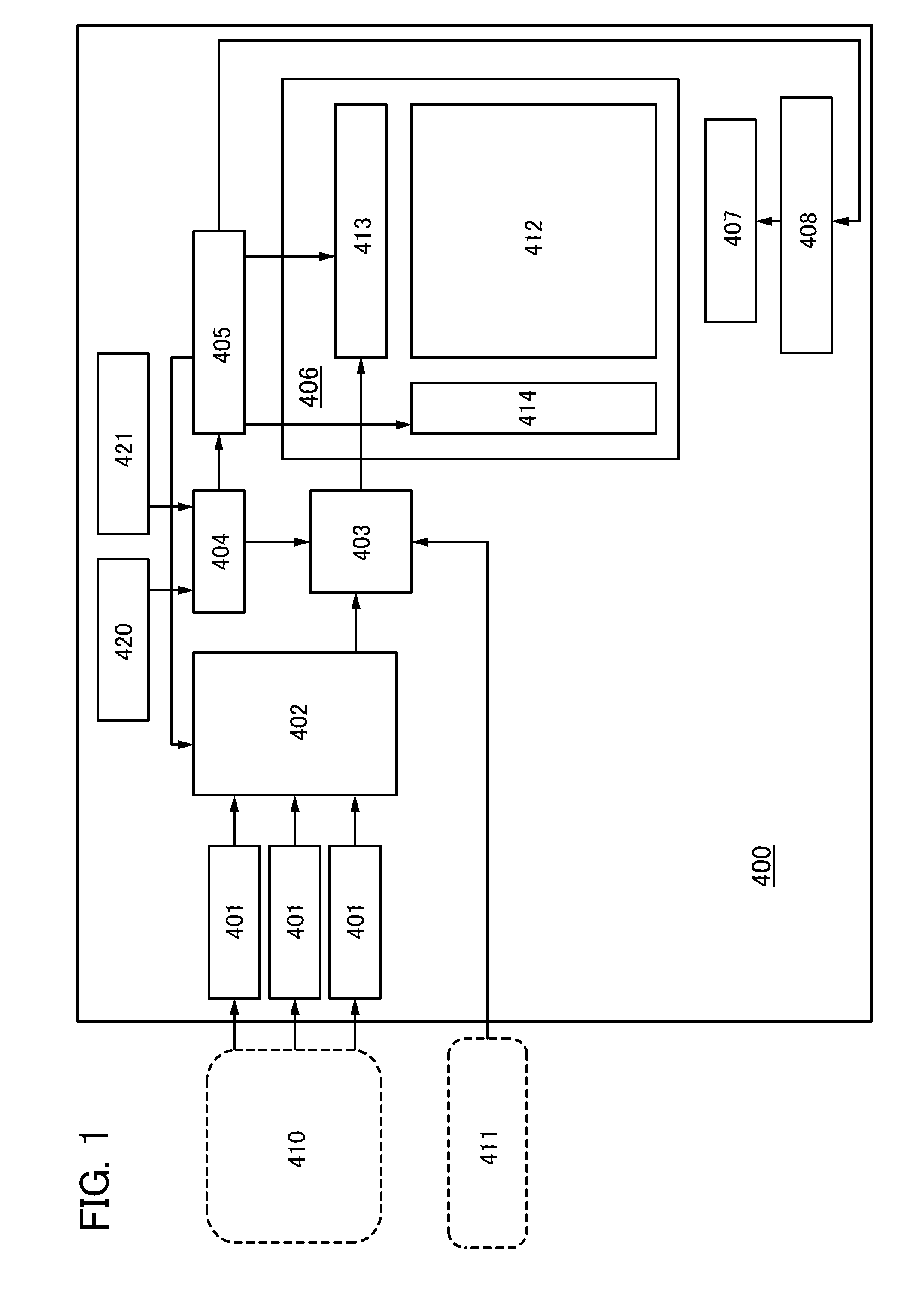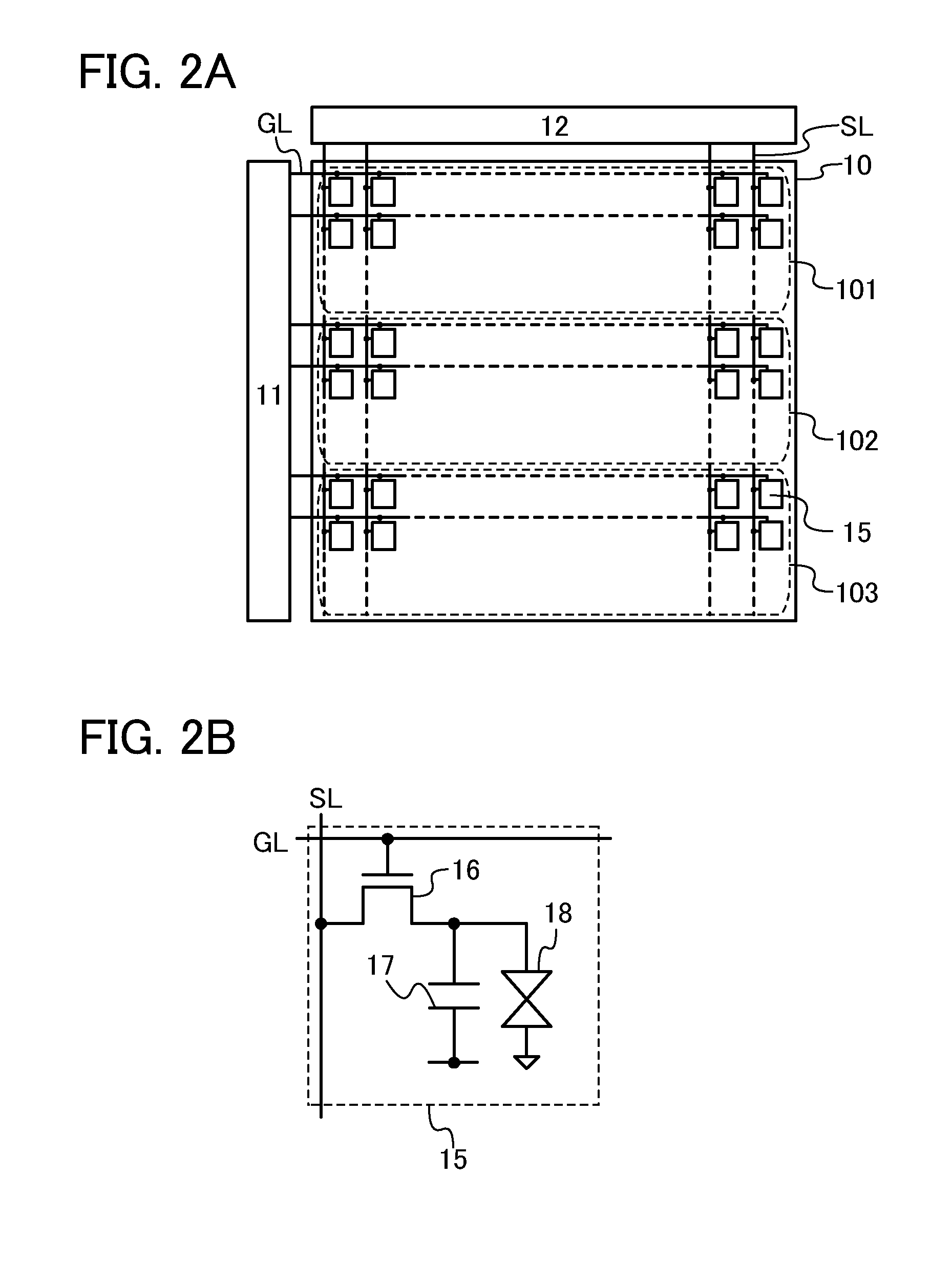Liquid crystal display device
a liquid crystal display and active matrix technology, applied in the field of active matrix liquid crystal display devices, can solve the problems of color breakage and other problems, and achieve the effect of prolonging the time for holding a voltage applied to a liquid crystal elemen
- Summary
- Abstract
- Description
- Claims
- Application Information
AI Technical Summary
Benefits of technology
Problems solved by technology
Method used
Image
Examples
embodiment 1
[0057]A liquid crystal display device 400 illustrated in FIG. 1 includes a plurality of image memories 401, an image data selection circuit 402, a selector 403, a CPU 404, a controller 405, a panel 406, a backlight 407, and a backlight control circuit 408.
[0058]Image data for a full-color image (full-color image data 410), which are input to the liquid crystal display device 400, are stored in the plurality of image memories 401. The full-color image data 410 include image data corresponding to their respective hues. The image data corresponding to the respective hues are stored in the respective image memories 401.
[0059]As the image memories 401, for example, memory circuits such as dynamic random access memories (DRAMs) or static random access memories (SRAMs) can be used.
[0060]The image data selection circuit 402 reads the full-color image data, which are stored in the plurality of image memories 401 and correspond to the respective hues, and sends the full-color image data to th...
embodiment 2
[0209]In Embodiment 2, one example of a liquid crystal display device of one embodiment of the present invention, whose panel structure is different from that in Embodiment 1 will be described.
[0210]A specific structure of a panel of one embodiment of the present invention will be described using an example thereof.
[0211]FIG. 15A illustrates a structural example of a liquid crystal display device. The liquid crystal display device illustrated in FIG. 15A includes a pixel portion 60, a scan line driver circuit 61, and a signal line driver circuit 62. In one embodiment of the present invention, the pixel portion 60 is divided into a plurality of regions. Specifically, the pixel portion 60 is divided into three regions (regions 601 to 603) in FIG. 15A. Each region includes a plurality of pixels 615 arranged in matrix.
[0212]M scan lines GL whose potentials are controlled by the scan line driver circuit 61 and 3×n signal lines SL whose potentials are controlled by the signal line driver ...
embodiment 3
[0248]In Embodiment 3, a manufacturing method of a transistor using an oxide semiconductor will be described.
[0249]First, as illustrated in FIG. 21A, an insulating film 701 is formed over an insulating surface of a substrate 700, and a gate electrode 702 is formed over the insulating film 701.
[0250]Although there is no particular limitation on a substrate which can be used as the substrate 700 as long as it has a light-transmitting property, it is necessary that the substrate have at least enough heat resistance to heat treatment performed later. For example, a glass substrate manufactured by a fusion process or a float process, a quartz substrate, a ceramic substrate, or the like can be used as the substrate 700. In the case where a glass substrate is used and the temperature at which the heat treatment is performed is high, a glass substrate whose strain point is higher than or equal to 730° C. is preferably used. Although a substrate formed of a flexible synthetic resin such as p...
PUM
| Property | Measurement | Unit |
|---|---|---|
| off-state current | aaaaa | aaaaa |
| voltage | aaaaa | aaaaa |
| voltage | aaaaa | aaaaa |
Abstract
Description
Claims
Application Information
 Login to View More
Login to View More - R&D
- Intellectual Property
- Life Sciences
- Materials
- Tech Scout
- Unparalleled Data Quality
- Higher Quality Content
- 60% Fewer Hallucinations
Browse by: Latest US Patents, China's latest patents, Technical Efficacy Thesaurus, Application Domain, Technology Topic, Popular Technical Reports.
© 2025 PatSnap. All rights reserved.Legal|Privacy policy|Modern Slavery Act Transparency Statement|Sitemap|About US| Contact US: help@patsnap.com



